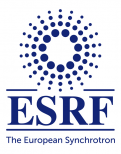European Synchrotron Radiation Facility (ESRF)
27 April 2021
Modified: 27 April 2021
Reading time: 2 minute(s)
 Special X-ray source which is fundamentally important for determining the atomic structure, electronic structure and magnetic properties of materials.
Special X-ray source which is fundamentally important for determining the atomic structure, electronic structure and magnetic properties of materials.
Aims to provide X-ray based measurement technique services for research in chemistry, biology, materials science, nanotechnology, solid state physics, medicine, pharmacy, earth sciences, environmental science and even archaeology.
After completion of the ongoing upgrade (in August 2020), the ESRF will become the world’s first high-energy, fourth-generation synchrotron light source.
| Short name | ESRF |
| Name | European Synchrotron Radiation Facility |
| Official website | http://www.esrf.eu |
| Year of foundation | 1988 |
| ESFRI project/landmark | landmark |
| Headquarters | France, Grenoble |
| Number of member countries | 13 |
| Participating countries | Members: Belgium, Denmark, Finland, France, Germany, Italy, Netherlands, Norway, Russia, Spain, Sweden, Switzerland, UK Associate or signatory countries: Austria, Czech Republic, Hungary, India, Israel, Poland, Portugal |
| Hungary’s accession | 2017 |
| Partner institutions in Hungary |
Wigner Research Centre for Physics Institute for Nuclear Research (ATOMKI) Eötvös Loránd University (ELTE) Centre for Energy Research Research Centre for Natural Sciences (TTK) Budapest University of Technology and Economics (BME) |
| Public administration representative | – |
| Professional observer | György Vankó |
| Membership payments | 2015: - 2016: - 2017: EUR 1,119,055 (≈ HUF 342.8 million) 2018: EUR 244,313 (≈ HUF 75.4 million) 2019: EUR 238,702.5 (≈ HUF 83.5 million) 2020: EUR 243,475.0 (≈ HUF 85.2 million) |
Benefits of the membership for Hungary
- ESRF stands out from the several synchrotron sources of the world in terms of test beam parameters, the number of measurement techniques, available equipment and the number of measurement channels, enabling Hungarian researchers to participate in cutting-edge research projects in the fields of biology, chemistry, physics, materials science and earth sciences.
- Promotes multidisciplinary research and cooperation.
- The facility serves more than 10,000 researchers a year, and the results are published in about 2,000 scientific papers.
Updated: 27 April 2021






